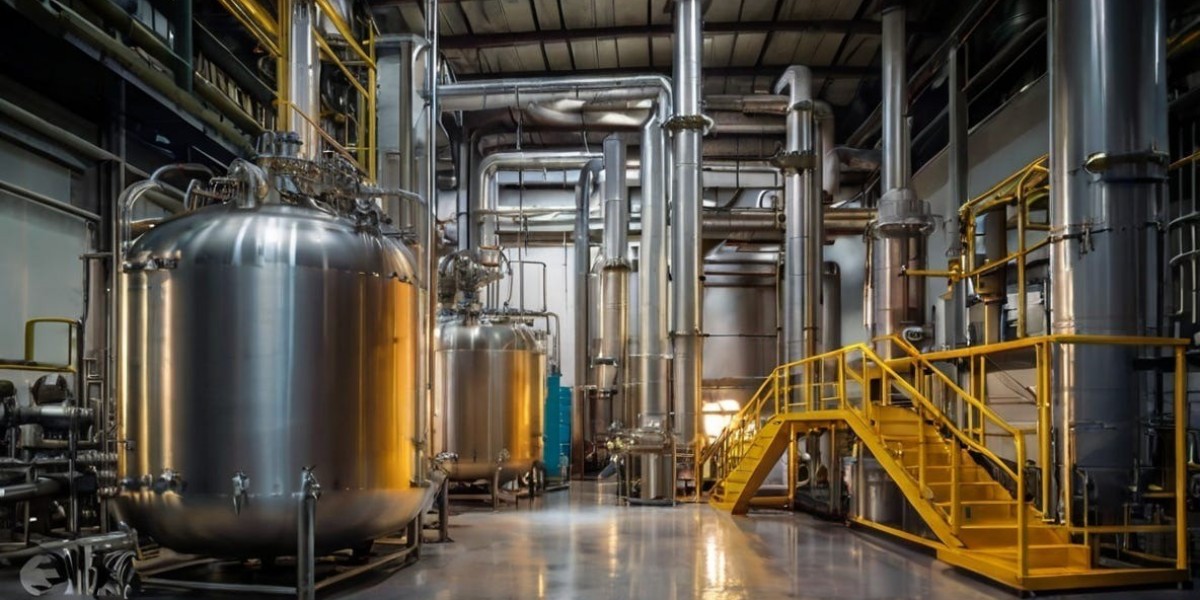IMARC’s new report titled “N-Methyl Aniline Production Cost Analysis 2025: Industry Trends, Plant Setup, Machinery, Raw Materials, Investment Opportunities, Cost and Revenue,” provides a comprehensive roadmap for setting up a n-methyl aniline production plant. It covers vital aspects such as raw materials, equipment, labor, utilities, and capital investment. The n-methyl aniline production plant cost analysis helps stakeholders assess operational expenses and potential returns, enabling informed financial planning. This report is a valuable resource for entrepreneurs, investors, consultants, and industry professionals seeking to understand cost drivers and optimize production setup.
What is N-Methyl Aniline?
N-Methyl Aniline is an organic chemical compound belonging to the aromatic amine family. It is a colorless to pale yellow liquid with a characteristic odor and is primarily used as an intermediate in the production of dyes, agrochemicals, pharmaceuticals, and rubber processing chemicals. Chemically, it is derived from aniline through a methylation process, giving it the molecular formula C7H9N. Owing to its ability to act as a solvent and a reactive intermediate, N-Methyl Aniline finds extensive applications in the manufacture of antioxidants, corrosion inhibitors, and lubricating oil additives. It is also used in the synthesis of N-alkyl anilines, which are further utilized in fine chemical and specialty chemical formulations. Proper handling and storage are essential, as it can be toxic upon prolonged exposure, but its versatility makes it a valuable component in several industrial chemical processes.
Request for a Sample Report: https://www.imarcgroup.com/n-methyl-aniline-manufacturing-plant-project-report/requestsample
Market Trends and Drivers:
The global N-Methyl Aniline market is witnessing steady growth, driven by its increasing use across multiple industries such as dyes, agrochemicals, and pharmaceuticals. The rising demand for high-performance dyes and pigments in textiles, paints, and coatings sectors is a key growth factor. Additionally, the expanding agricultural sector is fueling the need for efficient pesticide and herbicide intermediates derived from N-Methyl Aniline. In the pharmaceutical industry, it serves as a crucial raw material for active ingredient synthesis. Moreover, the growing focus on specialty chemicals and customized chemical formulations is further boosting market demand. Technological advancements in chemical synthesis and process optimization are enhancing production efficiency, reducing environmental impact, and supporting sustainable growth. However, regulatory concerns regarding toxicity and environmental safety are encouraging manufacturers to innovate greener alternatives and adopt safer production practices.
Key factors for setting up a n-methyl aniline production plant:
- Market Research
The report offers an exhaustive overview of the global n-methyl aniline industry, including a detailed breakdown by segments and regions within the sector. It also includes in-depth analyses of prices involved, market trends and historical data and forecast.
- Market Forecast
- Price Analysis
- Market Breakup by Region
- Market Breakup by Segment
- Market Trends
- Planning and Designing
A detailed and up-to-date business plan is indispensable for mapping out the steps to establish and operate a n-methyl aniline production facility. This report offers in-depth details about the process flow and the various unit operations involved in a n-methyl aniline production plant.
- Technical Tests
- Quality Assurance Criteria
- Mass Balance and Raw Material Requirements
- Unit Operations Involved
- Product Overview
- Legal and Regulatory Compliance
Understanding and complying with the intricate framework of business laws and regulations is a vital aspect of establishing a n-methyl aniline production facility. This requires a detailed knowledge of legal obligations, such as labor laws, environmental standards, tax policies, and industry-specific regulations.
- Plant Requirements and Costs
The report offers a detailed location analysis, including insights into land selection, key criteria, location importance, environmental considerations, and associated costs for establishing a n-methyl aniline production facility. It also provides information on plant layout and the factors that impact its design.
- Human Resource Requirements and Costs
- Utility Requirements and Costs
- Transportation Requirements and Costs
- Packaging Requirements and Costs
- Raw Material Requirements and Costs
- Machinery Requirements and Costs
- Plant Layout
- Land, Location and Site Development
5. Hiring and Training
Effective workforce planning and recruitment strategies are critical for assembling a skilled and efficient team to manage a n-methyl aniline production plant. This process includes identifying the specific skills and qualifications needed for different roles and anticipating future staffing requirements based on production goals and business expansion.
- Developing Health and Safety Protocols
- Implementing Training Programs for Employees
- Complying with Labor Laws and Regulations
- Supply Chain Management
Building strong partnerships with suppliers and vendors is crucial to maintaining a dependable and cost-efficient supply chain. This requires choosing partners who can reliably deliver high-quality raw materials and components at competitive rates.
- Planning Logistics and Transportation Networks
- Implementing Efficient Inventory Management Systems
- Project Economics
This entails a thorough analysis of the costs associated with a n-methyl aniline production plant, covering capital expenditure (CapEx), operating expenditure (OpEx), income forecasts, taxation, depreciation, liquidity, profitability, payback period, net present value (NPV), uncertainty, sensitivity assessments, etc. In addition to this, it includes an in-depth review of financial assistance options and a comprehensive list of certifications necessary for establishing the plant.
- Financial Analysis
- Profit Projections
- Taxation and Depreciation
- Revenue Projections
- Expenditure Projections
- Operating Costs
- Capital Investments
- Marketing and Distribution Strategies:
Creating a robust marketing strategy and establishing strong brand positioning are vital for building a production plant's market presence. This process includes conducting thorough market research to identify customer needs, preferences, and competitive trends.
- Identifying Distribution Channels and Sales Networks
- Leveraging Digital Marketing and E-Commerce Platforms
- Participating in Trade Shows and Industry Events
About Us:
IMARC Group is a global management consulting firm that helps the world’s most ambitious changemakers to create a lasting impact. The company excel in understanding its client’s business priorities and delivering tailored solutions that drive meaningful outcomes. We provide a comprehensive suite of market entry and expansion services. Our offerings include thorough market assessment, feasibility studies, company incorporation assistance, factory setup support, regulatory approvals and licensing navigation, branding, marketing and sales strategies, competitive landscape, and benchmarking analyses, pricing and cost research, and procurement research.
Contact Us:
IMARC Group
134 N 4th St. Brooklyn, NY 11249, USA
Email: sales@imarcgroup.com
Tel No:(D) +91 120 433 0800
United States: (+1-201971-6302







